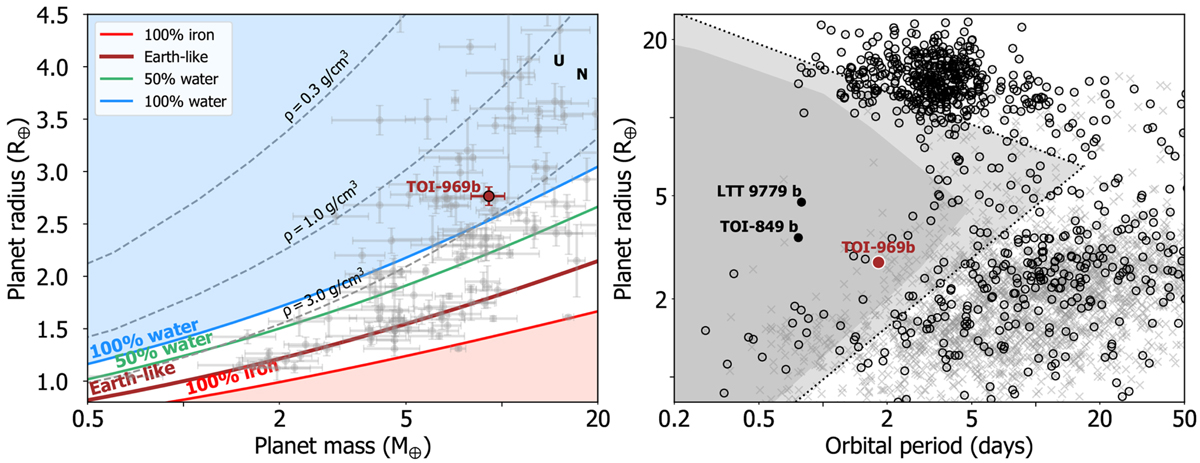Fig. 11

Download original image
Comparative properties of TOI-969b. Left: mass–radius diagram of known exoplanets with measured mass precisions better than 30% (gray symbols) and the location of TOI-969b. The bulk density lines corresponding to different compositions from Zeng et al. (2019) are shown as solid traces, and the dashed lines correspond to iso-densities of 0.3, 1, and 3 gm−3. Right: period-radius diagram of known exoplanets (gray crosses) highlighting those with measured masses (open black circles). The light-gray-shaded region represents the mean boundaries of the hot-Neptune desert derived by Mazeh et al. (2016) and the dark-grey-shaded region corresponds to the interior envelope of the \cr boundaries. The location of TOI-969 b is marked in red, as are the locations two other planets in the hot-Neptune desert, namely TOI-849 b (Armstrong et al. 2020) and LTT 9779 b (Jenkins et al. 2020).
Current usage metrics show cumulative count of Article Views (full-text article views including HTML views, PDF and ePub downloads, according to the available data) and Abstracts Views on Vision4Press platform.
Data correspond to usage on the plateform after 2015. The current usage metrics is available 48-96 hours after online publication and is updated daily on week days.
Initial download of the metrics may take a while.


